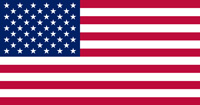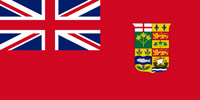World War I (1914-1918)

Second Battle of the Somme (21 August 1918)
The Second Battle of the Somme of 1918 was fought during the First World War on the Western Front from late August to early September, in the basin of the River Somme. It was part of a series of successful counter-offensives in response to the German Spring Offensive, after a pause for redeployment and supply.
The most significant feature of the 1918 Somme battles was that with the first Battle of the Somme of 1918 having halted what had begun as an overwhelming German offensive, the second formed the central part of the Allies' advance to the Armistice of 11 November.
Battle
On 15 August 1918, British The British Empire, was composed of the dominions, colonies, protectorates, mandates, and other territories ruled or administered by the United Kingdom and its predecessor states. At its height it was the largest empire in history and, for over a century, was the foremost global power. By the start of the 20th century, Germany and the United States had begun to challenge Britain's economic lead. Field Marshal Douglas Haig refused demands from Supreme Allied Commander Marshal Ferdinand Foch to continue the Amiens offensive during World War I, as that attack was faltering as the troops outran their supplies and artillery, and German
The British Empire, was composed of the dominions, colonies, protectorates, mandates, and other territories ruled or administered by the United Kingdom and its predecessor states. At its height it was the largest empire in history and, for over a century, was the foremost global power. By the start of the 20th century, Germany and the United States had begun to challenge Britain's economic lead. Field Marshal Douglas Haig refused demands from Supreme Allied Commander Marshal Ferdinand Foch to continue the Amiens offensive during World War I, as that attack was faltering as the troops outran their supplies and artillery, and German The German Empire, also referred to as Imperial Germany, the Second Reich, as well as simply Germany, was the period of the German Reich from the unification of Germany in 1871 until the November Revolution in 1918, when the German Reich changed its form of government from a monarchy to a republic. During its 47 years of existence, the German Empire became the industrial, technological, and scientific giant of Europe. reserves were being moved to the sector. Instead, Haig began to plan for an offensive at Albert, which opened on 21 August. The main attack was launched by the British Third Army, with the United States
The German Empire, also referred to as Imperial Germany, the Second Reich, as well as simply Germany, was the period of the German Reich from the unification of Germany in 1871 until the November Revolution in 1918, when the German Reich changed its form of government from a monarchy to a republic. During its 47 years of existence, the German Empire became the industrial, technological, and scientific giant of Europe. reserves were being moved to the sector. Instead, Haig began to plan for an offensive at Albert, which opened on 21 August. The main attack was launched by the British Third Army, with the United States The United States of America (U.S.A. or USA), commonly known as the United States (U.S. or US) or America, is a country in North America. It is the world's third-largest country by both land and total area. The United States shares land borders with Canada to its north and with Mexico to its south. The national capital is Washington, D.C., and the most populous city and financial center is New York City. II Corps attached.
The United States of America (U.S.A. or USA), commonly known as the United States (U.S. or US) or America, is a country in North America. It is the world's third-largest country by both land and total area. The United States shares land borders with Canada to its north and with Mexico to its south. The national capital is Washington, D.C., and the most populous city and financial center is New York City. II Corps attached.
The second battle began on 21 August with the opening of the Second Battle of Bapaume to the north of the river itself. That developed into an advance which pushed the German Second Army back over a 55 kilometre front, from south of Douai to La Fère, south of Saint-Quentin, Aisne. Albert was captured on 22 August. On 26 August, the British First Army widened the attack by another twelve kilometres, sometimes called the Second Battle of Arras. Bapaume fell on 29 August. The Australian Australia, officially the Commonwealth of Australia, is a sovereign country comprising the mainland of the Australian continent, the island of Tasmania, and numerous smaller islands. In 1770, the British explorer James Cook mapped and claimed the east coast of Australia for Great Britain, and the First British Fleet arrived in 1788 to establish the penal colony of New South Wales. Australia sent many thousands of troops to fight for Britain during WWI. Corps crossed the Somme River on the night of 31 August, and broke the German lines at the Battle of Mont St. Quentin and the Battle of Péronne. The British Fourth Army's commander, General Henry Rawlinson, described the Australian advances of 31 August – 4 September as the greatest military achievement of the war.
Australia, officially the Commonwealth of Australia, is a sovereign country comprising the mainland of the Australian continent, the island of Tasmania, and numerous smaller islands. In 1770, the British explorer James Cook mapped and claimed the east coast of Australia for Great Britain, and the First British Fleet arrived in 1788 to establish the penal colony of New South Wales. Australia sent many thousands of troops to fight for Britain during WWI. Corps crossed the Somme River on the night of 31 August, and broke the German lines at the Battle of Mont St. Quentin and the Battle of Péronne. The British Fourth Army's commander, General Henry Rawlinson, described the Australian advances of 31 August – 4 September as the greatest military achievement of the war.
On the morning of 2 September, after a heavy battle, the Canadian Canada is a country in North America. Because Britain still maintained control of Canada's foreign affairs under the British North America Act, 1867, its declaration of war in 1914 automatically brought Canada into World War I. Volunteers sent to the Western Front later became part of the Canadian Corps, which played a substantial role in the Battle of Vimy Ridge and other major engagements of the war. Corps seized control of the Drocourt-Quéant line (representing the west edge of the Hindenburg Line). The battle was fought by the Canadian 1st Division, 4th Division, and by the British 52nd Division. Heavy German casualties were inflicted, and the Canadians also captured more than 6,000 unwounded prisoners. Canada's losses amounted to 5,600. By noon that day the German commander, Erich Ludendorff, had decided to withdraw behind the Canal du Nord.
Canada is a country in North America. Because Britain still maintained control of Canada's foreign affairs under the British North America Act, 1867, its declaration of war in 1914 automatically brought Canada into World War I. Volunteers sent to the Western Front later became part of the Canadian Corps, which played a substantial role in the Battle of Vimy Ridge and other major engagements of the war. Corps seized control of the Drocourt-Quéant line (representing the west edge of the Hindenburg Line). The battle was fought by the Canadian 1st Division, 4th Division, and by the British 52nd Division. Heavy German casualties were inflicted, and the Canadians also captured more than 6,000 unwounded prisoners. Canada's losses amounted to 5,600. By noon that day the German commander, Erich Ludendorff, had decided to withdraw behind the Canal du Nord.
By 2 September, the Germans had been forced back to the Hindenburg Line, from which they had launched their offensive in the spring.
On their way to the Hindenburg Line, in a fierce battle, the Canadian troops, led by General Sir Arthur Currie, overcame the earthworks of the incomplete Canal du Nord during the Battle of Canal du Nord.
In late September/early October, one of the epic battles of the whole war was the breach of the Hindenburg Line (the Battle of St. Quentin Canal) by British, Australian and American troops (under the command of Australian General John Monash). Soon after, the Canadians breached the Hindenburg Line at the Battle of Cambrai.
A key part of the German supply line ran parallel with the front. This second 1918 battle around the Somme was part of a strategy designed to push parts of the German line back behind this main supply line so cutting it and making impossible the efficient maintenance of the German forces on the front. The campaign began with battle of Bapaume and, starting shortly after, the Battle of Saint-Mihiel, outside the Somme area, with the aim of reducing salients before using the fluidity of the broken line to press on to the strategic railway. It was hoped that this fluidity would be present as, owing to the German advance in the spring, the German forces were well in advance of their hitherto impregnable, very well prepared defences on the Hindenburg Line.
This policy worked but it took some very determined work at the St. Quentin Canal, among the prepared defences, to achieve success.
HISTORY

RESOURCES
This article uses material from the Wikipedia articles "World War", "World War I", and "Second Battle of the Somme (21 August 1918)", which is released under the Creative Commons Attribution-Share-Alike License 3.0.
© Stories Preschool. All Rights Reserved.










